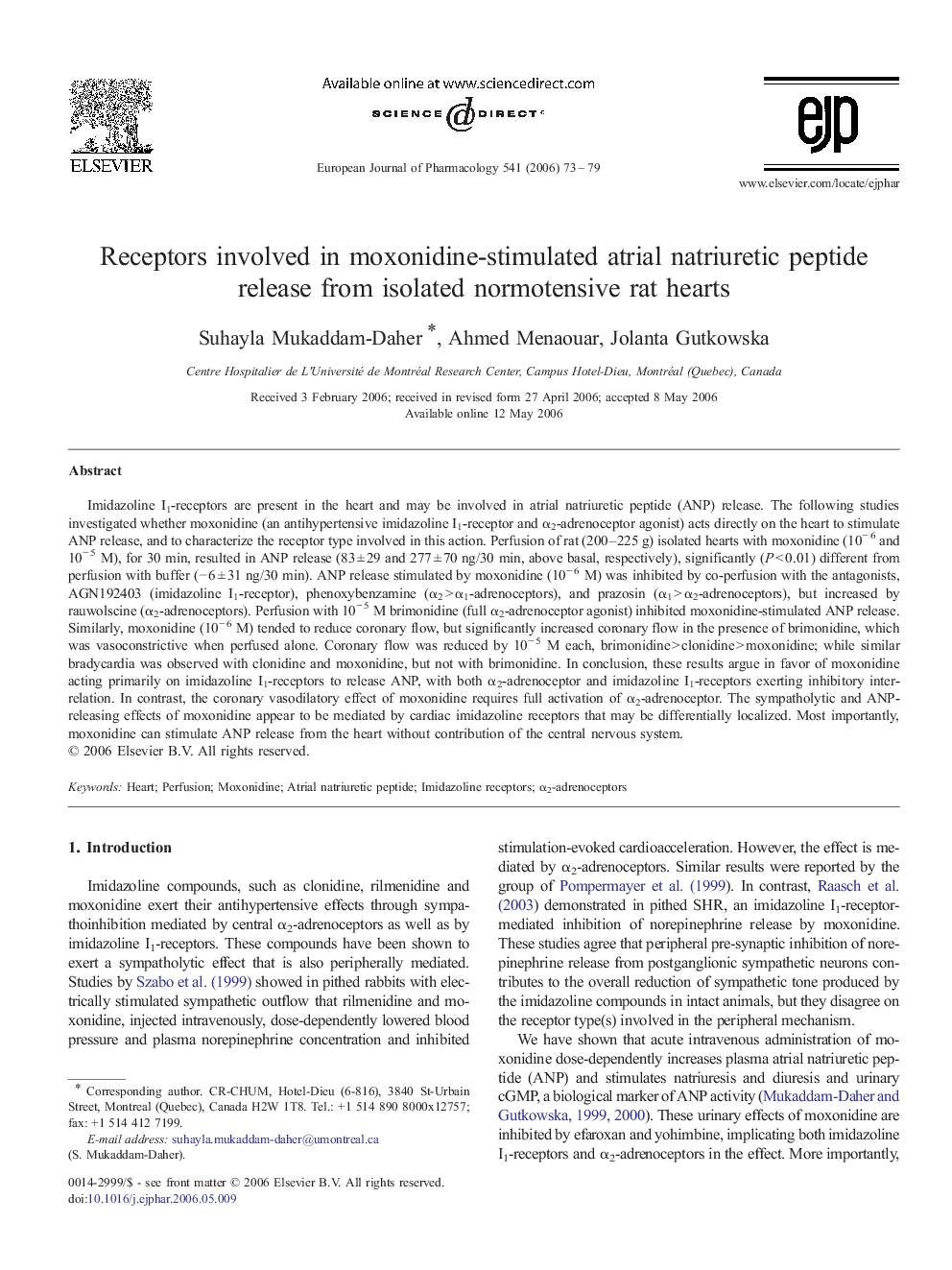| Article ID | Journal | Published Year | Pages | File Type |
|---|---|---|---|---|
| 2537107 | European Journal of Pharmacology | 2006 | 7 Pages |
Imidazoline I1-receptors are present in the heart and may be involved in atrial natriuretic peptide (ANP) release. The following studies investigated whether moxonidine (an antihypertensive imidazoline I1-receptor and α2-adrenoceptor agonist) acts directly on the heart to stimulate ANP release, and to characterize the receptor type involved in this action. Perfusion of rat (200–225 g) isolated hearts with moxonidine (10− 6 and 10− 5 M), for 30 min, resulted in ANP release (83 ± 29 and 277 ± 70 ng/30 min, above basal, respectively), significantly (P < 0.01) different from perfusion with buffer (− 6 ± 31 ng/30 min). ANP release stimulated by moxonidine (10− 6 M) was inhibited by co-perfusion with the antagonists, AGN192403 (imidazoline I1-receptor), phenoxybenzamine (α2 > α1-adrenoceptors), and prazosin (α1 > α2-adrenoceptors), but increased by rauwolscine (α2-adrenoceptors). Perfusion with 10− 5 M brimonidine (full α2-adrenoceptor agonist) inhibited moxonidine-stimulated ANP release. Similarly, moxonidine (10− 6 M) tended to reduce coronary flow, but significantly increased coronary flow in the presence of brimonidine, which was vasoconstrictive when perfused alone. Coronary flow was reduced by 10− 5 M each, brimonidine > clonidine > moxonidine; while similar bradycardia was observed with clonidine and moxonidine, but not with brimonidine. In conclusion, these results argue in favor of moxonidine acting primarily on imidazoline I1-receptors to release ANP, with both α2-adrenoceptor and imidazoline I1-receptors exerting inhibitory inter-relation. In contrast, the coronary vasodilatory effect of moxonidine requires full activation of α2-adrenoceptor. The sympatholytic and ANP-releasing effects of moxonidine appear to be mediated by cardiac imidazoline receptors that may be differentially localized. Most importantly, moxonidine can stimulate ANP release from the heart without contribution of the central nervous system.
